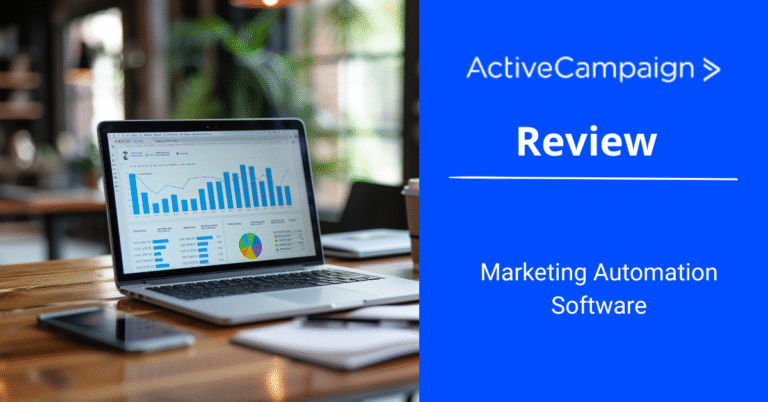
2025 Email Deliverability Guide: Master Inbox Placement
Email marketing is a powerful engine for business growth, but that effort is wasted if your messages never reach their destination. This is where email deliverability becomes your top priority—the single most important factor that can make or break your campaigns.
In this definitive guide, we’re taking a deep dive into the world of email deliverability. We’ll expose the common mistakes that sabotage your inbox placement and equip you with the best practices and essential tools you need to ensure your emails consistently land where they belong: in the inbox.
What is Email Deliverability?
At its core, email deliverability is the science of getting your messages to your subscribers’ inboxes. High deliverability means your emails are seen, opened, and have a chance to succeed. Conversely, poor deliverability means your emails are blocked, filtered as spam, or simply vanish into the digital abyss.
Email Delivery vs. Email Deliverability
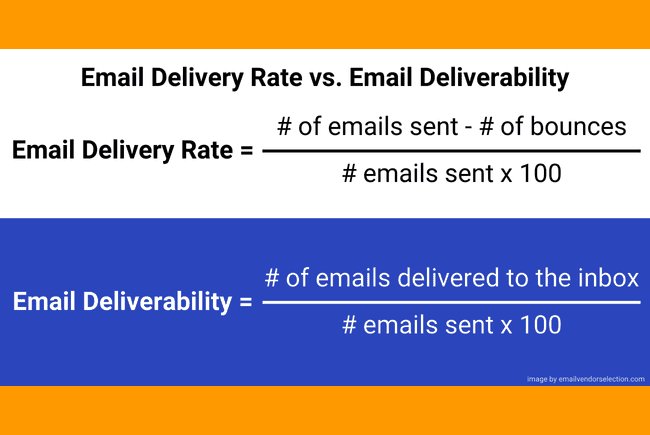
For email marketers, it’s crucial to understand the difference between these two terms—a mistake that can drastically skew your view of a campaign’s performance.
- Email delivery simply means a recipient’s mail server has accepted your email. Think of it as a package being dropped on the doorstep. It’s a pass/fail metric. It tells you the email didn’t bounce, but it gives you no insight into where the package ended up. The email could be in the primary inbox, the promotions tab, or the dreaded spam folder.
- Email deliverability, on the other hand, is about inbox placement. This metric is the true measure of success. It tells you if your email not only made it to the mail server but also landed exactly where you want it to—in the main inbox. Even if your delivery rate is a perfect 100%, many of your emails could still be going to spam, which is a problem your delivery rate won’t show you.
Ultimately, delivery is the first step, while deliverability is the final, most crucial outcome.
Why is Great Email Deliverability So Important?
Email deliverability is not just a technical detail; it’s the single most important factor for the success of your email marketing. Imagine spending hours creating the perfect email, only for it to vanish into the spam folder. That effort is completely wasted.
Since most subscribers will never check their spam folders, deliverability directly impacts your open rates, click rates, and, most importantly, your revenue. It’s the difference between a high-performing campaign and a total failure.
Here’s how deliverability affects the health of your business:
- Protects Crucial Communication: Transactional emails like order confirmations and password resets are the lifeblood of customer trust. If they don’t arrive, it frustrates customers and can lead to lost business.
- Builds Trust and Loyalty: When your emails consistently reach the inbox, you build a reliable presence that strengthens customer trust and loyalty.
- Drives Revenue: Email has one of the highest ROIs of any channel, but that return is only realized when your emails are seen. Every undelivered email is a missed opportunity for a sale.
- Boosts Brand Visibility: A consistent presence in the inbox reinforces your brand and keeps you top-of-mind. Conversely, a stream of your emails landing in spam damages your reputation.
- Nurtures Engagement: Opens and clicks are powerful signals that fuel your marketing automation. If your emails are bouncing or going to spam, you’re not engaging with anyone.
Learn: How to hire a freelance service?
What is a “Good” Email Deliverability Rate?
Defining a single “good” deliverability rate is tricky because there’s no universally agreed-upon way to measure it. Unlike a simple delivery rate, you can’t see exactly how many of your emails land in the primary inbox. Instead, deliverability is often an educated guess, a score based on a mix of metrics like bounce rates, spam complaints, and overall sender reputation. This is why you’ll see a range of figures across different sources.
For a clearer picture, it’s more useful to look at benchmarks:
- Global Average: The global average inbox placement rate is approximately 85%. This means that, on average, roughly one in every six emails still doesn’t make it to the main inbox.
- Location Matters: Deliverability can vary dramatically by country. For example, some reports show inbox placement rates in Germany are nearly perfect at 98%, while in India, that figure can drop to 70%.
- Mailbox Providers Have Different Rules: Not all mailbox providers are created equal. While the average deliverability to major providers like Microsoft and Google is around 86%, some reports show that landing in an Apple Mail inbox can be more challenging, with rates sometimes as low as 66%.
A good deliverability rate is one that is consistently at or above the global average. However, a truly excellent deliverability rate is typically 95% or higher, which is the mark of a well-maintained and highly respected sender.
What is a Healthy Bounce Rate?
An email bounce is a delivery failure, and your bounce rate is the percentage of your total sent emails that fail to be delivered. There are two critical types of bounces you need to understand:
- Soft Bounce: A soft bounce is a temporary issue. It happens when an email can’t be delivered because the recipient’s inbox is full, their mail server is temporarily down, or your sending volume has suddenly spiked, causing a temporary block. Most email service providers will retry sending soft-bounced emails, but they’ll eventually stop trying if the issue persists.
- Hard Bounce: A hard bounce is a permanent delivery failure. This is a much more serious problem, usually caused by an invalid, fake, or non-existent email address. When an email hard bounces, it means that the address will never work. You must immediately remove any address that results in a hard bounce from your list.
A healthy email bounce rate is below 2%. If your rate is consistently between 2 and 5%, it’s a clear signal that you need to take action. A high bounce rate is a red flag to mailbox providers and can severely damage your sender reputation, leading to your emails being filtered as spam or even blocked entirely.
To maintain a low bounce rate and a strong sender reputation, you must prioritize list hygiene. Regularly using an email verification tool is the best way to clean your list of invalid, inactive, and risky email addresses. This proactive approach ensures your messages are always reaching valid inboxes.
What Affects Email Deliverability?
Your email deliverability is a delicate ecosystem influenced by two main factors: your technical setup and your day-to-day sending practices. Technical elements include your server performance, IP address, and email software, while your sending practices cover everything from your content quality to how well you maintain your email list.
Top mailbox providers like Google and Yahoo have published detailed guidelines on what they expect from senders. These are the key factors you need to master to maintain a high deliverability rate.
1. Sender Reputation
Your sender reputation is a “score” that email providers use to judge the trustworthiness of your emails quickly. Think of it as a credit score for your email address. It’s the single biggest factor influencing where your emails land—be it the inbox, the spam folder, or nowhere at all.
This score is built on several metrics, but the most damaging are:
- Spam Complaint Rates: Every time a subscriber marks your email as spam, it’s a major red flag. Most providers, including Yahoo and Google, maintain a strict threshold of 0.3% (3 complaints per 1,000 emails). Exceeding this tiny number can quickly and severely damage your reputation.
- Hard Bounce Rates: A high number of hard bounces signals to providers that you are not maintaining a clean list, which is a key indicator of a spammer.
2. IP Address Reputation
Your IP address—the unique identifier of your sending server—also carries a reputation. This reputation is tied to your IP, and it’s a key factor in how mailbox providers see you.
- Shared IP Address: Most small to medium-sized businesses start with a shared IP address. This means your emails are sent from the same IP as other senders on your platform. While this is cost-effective and low-maintenance, your reputation is at the mercy of your “neighbors.” If another user on the same shared IP sends spam, your deliverability can suffer, even if you do everything right.
- Dedicated IP Address: High-volume senders often prefer a dedicated IP address. This gives you complete control over your own reputation. Your actions alone—good or bad—determine your IP’s health. While it requires a consistent sending volume and a warm-up period, a dedicated IP provides the maximum level of control over your deliverability.
Email Authentication: Your Digital ID
Think of email authentication as your sender ID—it’s the critical process that proves to mailbox providers that your emails are legitimate and not a forged message from a spoofer or phisher. Without proper authentication, a significant portion of your emails will be automatically blocked, regardless of your content.
There are three key types of authentication you need to master:
- SPF (Sender Policy Framework): This is a simple but vital check. This record lists the authorized IP addresses that can send emails on behalf of your domain. It’s like having a bouncer at a club check your name against a guest list.
- DKIM (DomainKeys Identified Mail): DKIM adds a unique, encrypted signature to your email’s header. This adds an encrypted digital signature to your email headers, verifying the message’s integrity in transit.
- DMARC (Domain-based Message Authentication, Reporting, and Conformance): This is the ultimate layer of protection. DMARC requires an email to pass either an SPF or DKIM check. It also tells mailbox providers what to do with unauthenticated emails (e.g., quarantine them, reject them, or simply report on them). For bulk senders, it is no longer optional—Google and Yahoo now require DMARC for anyone sending over 5,000 emails a day.
In addition to these protocols, both Google and Yahoo also require valid reverse and forward DNS records. These records are the digital registry that connects your domain name to your IP address, serving as another essential check to prove your domain is genuine and not being used for malicious purposes. Without this, your emails are an instant red flag.
Your Email Service Provider and Server Infrastructure
Your choice of email service provider (ESP) is a critical decision that directly impacts your deliverability. The quality of your ESP’s servers, IP pools, and overall infrastructure can either set you up for success or inadvertently sabotage your efforts. A high-quality ESP maintains a strong reputation with mailbox providers, managing things like technical compliance and IP health on behalf of its clients.
For specialized needs, you may want to consider using SMTP servers or email APIs, especially for transactional emails. These services are designed for high-volume, reliable sending and offer you a greater level of control over performance compared to a standard marketing platform.
Low Open Rates and Poor Engagement
Engagement is a powerful signal to mailbox providers. When your subscribers consistently ignore your messages, it tells providers that your emails are uninteresting or irrelevant. This lack of engagement directly harms your sender reputation, which leads to providers filtering more emails into the spam folder.
A healthy open rate is generally considered to be above 20%. If your rate dips below 15%, it’s a clear warning sign. Consistently falling below 10% indicates low-quality content and can cause providers to block your emails entirely.
To maintain strong engagement and protect your sender reputation, you must:
- Regularly Clean Your Lists: Remove unengaged or inactive subscribers to ensure your messages are only going to people who want to receive them.
- Create Resonant Content: Focus on delivering value, and tailor your content to your audience’s interests. This will naturally drive higher open and click-through rates.
How to hire a freelance service in 2025?
A quick note on Apple Mail: It’s important to remember that Apple Mail pre-loads email data even if a user hasn’t actually opened the email. This can sometimes inflate your open rates, so while the metric is still valuable, it’s wise to also pay close attention to your click-through and spam complaint rates for a more accurate picture of engagement.
16 Steps to Maximize Your Email Deliverability
Understanding the core principles of deliverability is one thing; mastering them is another. Here are the most practical, actionable steps you can take to ensure your emails consistently reach the inbox.
1. Test Your Email Deliverability and Sender Reputation
You can’t fix what you can’t measure. While you can’t get a perfect deliverability score after every send, you can use specialized tools to get an accurate health check of your sending infrastructure.
- Test Sender Reputation: A low sender reputation is a primary cause of deliverability issues. Use IP and domain reputation checkers to identify red flags and find opportunities for improvement.
- Check for Spam: Spam filters are intelligent, looking for specific cues in your content. Run a pre-send spam check to find and fix issues with your subject line, links, images, and HTML before your campaign goes out.
- Verify Authentication: Many reputation and spam testing services will also check your authentication credentials (SPF, DKIM, DMARC). Ensure you set these up correctly; without them, providers will block your emails instantly.
These tests are your diagnostic tools, helping you pinpoint exactly where your deliverability efforts are falling short.
2. Keep Your Email List Clean
A clean email list—one with only active, engaged subscribers—is the single most important factor for good deliverability. Contacts who don’t want your emails will leave them unopened or, worse, report them as spam. Both actions seriously damage your sender’s reputation. The presence of inactive emails, fake addresses, and spam traps will also lead to hard bounces, a major red flag to mailbox providers.
The solution is proactive list hygiene. Use an email verification tool to regularly clean your lists, removing invalid and risky addresses. Services like Bouncer make this process simple and quick, helping you maintain a low bounce rate and a strong sender reputation.
3. Never Buy or Rent Email Lists
Building a large list of engaged contacts can take time, but buying or renting lists is a shortcut to disaster. These contacts never opted in to receive your emails, making them highly likely to mark you as spam. Worse, sending to them can put you in violation of privacy laws like GDPR.
You need to gain explicit consent from every single subscriber. You can do this in two ways at the point of lead capture:
- Single Opt-In: Subscribers confirm their consent, typically with a checkbox on your sign-up form. This is the minimum legal requirement in many regions.
- Double Opt-In: This is the gold standard. After signing up, a new subscriber must click a confirmation link in an email to verify their address. This extra step ensures they are genuinely interested, reduces hard bounces from typos, and provides a clear audit trail of consent.
4. Send Engaging Emails
Great email content does more than just impress your audience—it’s a critical factor in deliverability. Poorly written, irrelevant, or spammy emails harm your sender’s reputation in multiple ways. Unimpressed recipients will stop opening them, unsubscribe, or, worst of all, flag them as spam. Mailbox providers’ spam filters are also programmed to detect red flags like excessive links, poor formatting, and spammy language.
The key to high engagement is relevance. Subscribers expect content that aligns with what they signed up for. Not every person on your list is interested in the same thing, which is where segmentation becomes essential. By grouping your list based on demographics, preferences, or behavior, you can send tailored, highly relevant emails that resonate with each group.
Another powerful way to boost engagement is personalization. Whether you’re simply using a subscriber’s first name or dynamically changing entire sections of content, personalization makes people feel valued and connected.
Finally, pay special attention to your subject lines. They are your first impression and often the sole reason a recipient decides to open or ignore your email. A compelling subject line is your most powerful tool for improving open rates and sending a positive signal to providers.
5. Authenticate Your Emails
Email authentication is no longer optional—it is a non-negotiable requirement for all senders, especially with new regulations from Google and Yahoo. Proper authentication is your proof of legitimacy, protecting you against spoofing and phishing attacks. The three core protocols all rely on adding specific DNS records to your domain:
- SPF (Sender Policy Framework): This record lists the authorized IP addresses that are allowed to send emails on behalf of your domain.
- DKIM (DomainKeys Identified Mail): This adds an encrypted digital signature to your email headers, verifying that the message hasn’t been tampered with in transit.
- DMARC (Domain-based Message Authentication, Reporting, and Conformance): This protocol allows you to specify what mailbox providers should do with emails that fail authentication. For bulk senders (over 5,000 emails per day), DMARC is now a mandatory requirement.
Ensuring these records are properly set up with your email marketing tool before you start sending is the first, most crucial step to protecting your deliverability.
6. Make It Easy to Unsubscribe
It may sound counterintuitive to make it easy for subscribers to leave, but it is one of the most effective ways to protect your sender reputation. Forcing a disinterested subscriber to stay on your list won’t make them engage. In fact, if they can’t find your unsubscribe link, they will likely mark your email as spam—a far more damaging action than an unsubscribe.
A subscriber who wants to leave is already disengaged. An unsubscribe tells providers that a user no longer wants your emails, while a spam report tells them that you are a malicious sender. The difference is massive. By providing a clear, visible unsubscribe link, you are practicing good list hygiene and ensuring your list is full of only your most engaged and valuable contacts. Google and Yahoo have even made this a core requirement for senders to ensure a good user experience.
7. Re-engage Inactive Subscribers
Part of maintaining a healthy list is knowing when to say goodbye to inactive subscribers. Rather than immediately deleting non-openers, you can launch an automated re-engagement campaign.
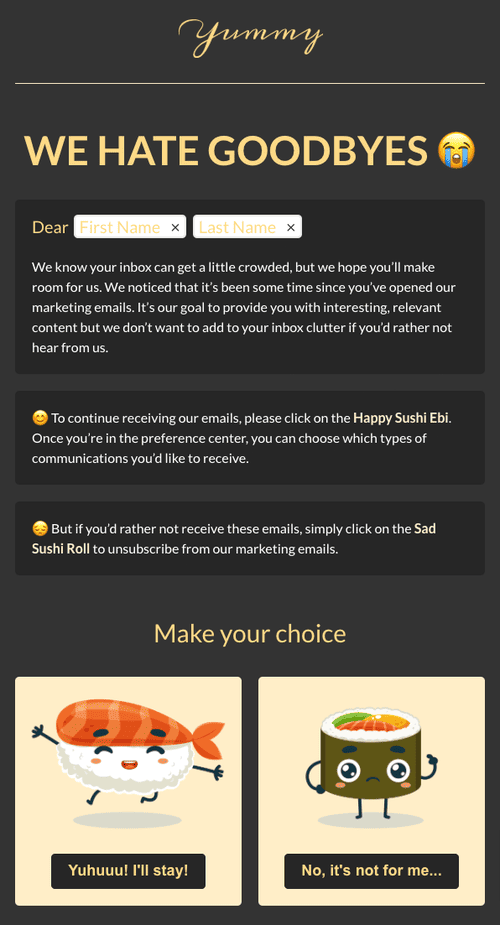
These campaigns gently remind subscribers of your value and ask if they’d like to continue receiving your emails. Your re-engagement email should include two options: a clear re-subscribe link and an easy-to-find unsubscribe link. If a subscriber doesn’t open any of your re-engagement emails, it’s a clear signal to remove them from your list. This simple, automated process keeps your list clean and full of engaged contacts.
8. Ask Subscribers to Add You to Their Contact List
This is one of the most powerful steps you can take to boost deliverability. When a subscriber adds your email address to their contact list, it tells their mailbox provider that you are a trusted sender. Spam filters will automatically mark emails from known contacts as “safe,” significantly increasing the chances of your emails landing in the primary inbox. It’s a simple request that has a major impact.
9. Use a Familiar Sender Name
Recipients scan the sender name and subject line before deciding to open an email. If they don’t recognize the sender’s name, they’ll likely assume it’s junk. This is why using a generic address like admin@ or marketing@ It is a mistake. People are in a hurry, and a generic address doesn’t stand out. Using a personal name, like Mor from Email Vendor Selection, is more recognizable and feels more authentic, which leads to better open rates. Always keep your sender name and address consistent to build brand recognition and trust.
10. Don’t Go Overboard with Images
While visually appealing, an over-reliance on images can be a significant deliverability risk. Spam filters often flag emails that are too image-heavy, as this is a common tactic in spoofing attacks. Furthermore, some mailbox providers block images by default, leaving your recipient with a blank space until they manually enable them. Images also increase the file size of your email, which can lead to slow load times and even trigger a bounce if the download times out. To avoid these issues, use images sparingly and ensure you write text as proper text, not as part of an image. Compress all images to reduce their file size and avoid using JavaScript, forms, or video embeds, as they won’t work in most email clients anyway. Instead, use a thumbnail or a GIF that links directly to a webpage.
11. Use Alt Text for All Images
You can’t control whether a subscriber has image rendering turned on, but you can control what they see if images don’t load. Alt text provides a text description of your image, which maintains the message’s clarity even if the visuals are missing. This small, simple step also makes your emails more accessible for visually impaired users who rely on screen readers. It’s a quick fix that has a big impact on engagement and user experience.
12. Keep Templates Responsive and Consistent
In today’s mobile-first world, a responsive email template is non-negotiable. If your emails look distorted on a phone or tablet, recipients will see it as a sign of low quality and are more likely to mark you as spam.
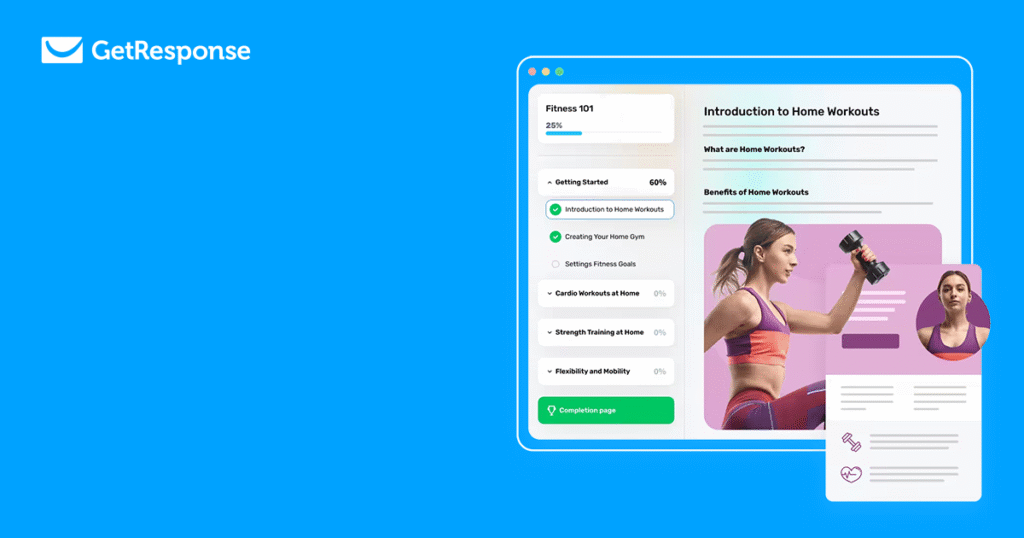
How does GetResponse help you to grow your small business?
A consistent, professional-looking design across all devices builds trust and brand recognition. When your emails always load quickly and look great, you’ll naturally see more opens and engagement over time.
13. Use a Reliable Email Platform
For most businesses, your email service provider (ESP) is your partner in deliverability. Your chosen platform is responsible for the technical infrastructure—like servers and IP addresses—that carries your emails. It’s crucial to choose a service that takes deliverability seriously and actively works to maintain a strong reputation with mailbox providers. If you’re on a shared IP address (common for smaller businesses), the reputation of your ESP is your reputation.
14. Don’t Send Campaigns from Personal Emails
Free personal email addresses like @gmail.com or @yahoo.com They are for personal communication, not for mass email marketing. Inbox providers are designed to flag high-volume sends from these domains as a red flag for spam or phishing. Sending from a professional, authenticated domain is now a non-negotiable requirement for good deliverability and is a sign of a legitimate sender.
15. Warm Up Your Sender Domain and IP
Sending a large volume of emails from a brand-new domain or IP address is one of the quickest ways to get blocked. Mailbox providers need to see a gradual increase in sending to build trust in you as a sender. This process, known as warming up, involves slowly increasing your email volume over time. If you have a large list (typically over 50,000 contacts), are moving to a new ESP, or are starting from scratch, a proper warmup is essential. It’s the most effective way to signal to providers that you are a legitimate sender and to build a strong reputation from day one.
16. Follow a Consistent Sending Schedule
A predictable sending schedule builds trust with both your subscribers and mailbox providers. Subscribers are more likely to engage with your emails when they know what to expect and when to expect it. This consistency is a powerful signal to providers that you are a legitimate sender.
If your sending habits are erratic—for example, if you take a three-month break and then suddenly send a large volume of emails—mailbox providers will view this as suspicious behavior. This can lead to a surge in bounces and a higher likelihood that providers will flag your emails as spam.
By setting a regular schedule, whether it’s weekly, bi-weekly, or monthly, you reinforce your sender reputation and train your audience to engage with your content. Many high-quality email marketing platforms offer features like send-time optimization, which automatically analyzes each recipient’s behavior to find the best time to send. This simple step helps you maximize open rates and maintain a consistent, healthy sending pattern.
How to hire a Freelance Service in 2025?
The Best Email Deliverability Tools
Navigating deliverability is easier with the right tools. Here are some of the top platforms that can help you diagnose and improve your email performance.
Bouncer – For Email Verification
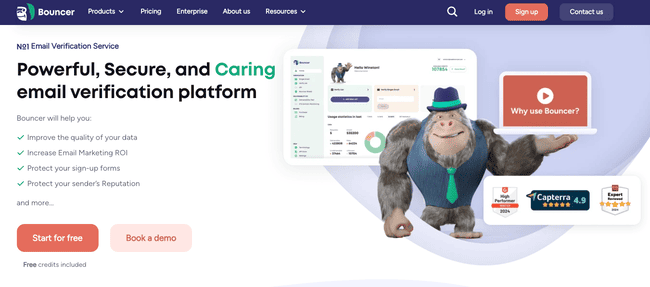
Bouncer is your first line of defense for list hygiene. It quickly identifies and removes bad email addresses, including bounces, fake emails, and spam traps. With powerful integrations, you can clean entire lists or automatically verify new sign-ups. Pricing starts at $8 for 1,000 credits. A generous 100 free credits get you started.
Or Read Our Bouncer Review
Postmastery EmailAudit – For Deliverability Testing
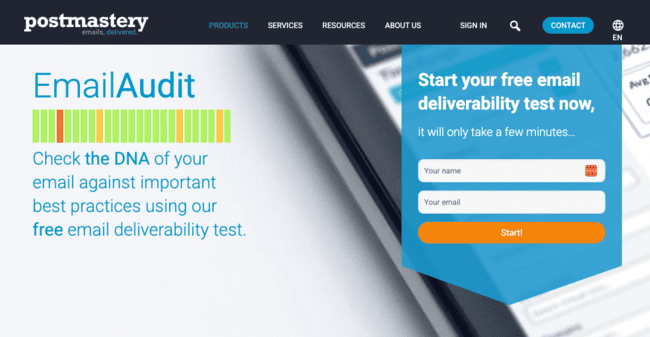
Postmastery offers a fantastic free tool called EmailAudit. This service provides a deep analysis of your email’s setup, authentication, and content. Just send an email to a provided address and receive a detailed report within minutes, making it a powerful way to diagnose your deliverability health.
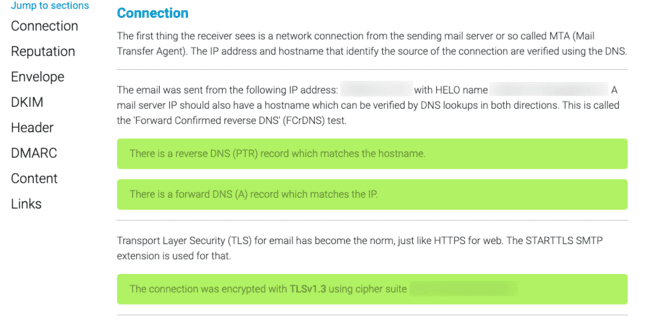
Green is okay, areas to improve are orange, and errors are red.
Postmastery email audit is fully free to use.
Sender Score – For IP Reputation,
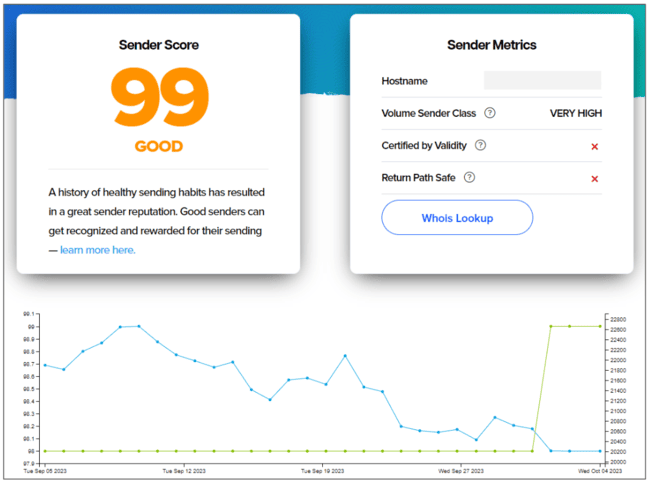
Sender Score provides a simple yet crucial IP reputation check. By entering your IP address or domain, the tool scores your sender reputation out of 100 and breaks down the factors affecting it. A score above 70 is considered good. The tool is free to use.
MxToolbox – For Technical Diagnostics
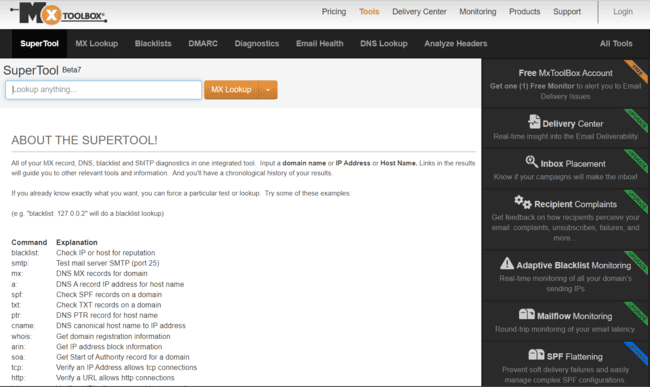
MxToolbox is the go-to resource for anyone looking to get under the hood of their email infrastructure. It’s famous SuperTool lets you run over 37 technical tests, including DNS lookups and SPF, DKIM, and DMARC checks. It can also tell you if your IP is on any of more than 100 blacklists. While basic checks are free, more advanced features are available in a paid service.
Learn: Why GetResponse is The Best For Growing Your Small Business?
Why Emails Land in the Spam Folder
The junk folder is the bane of every email marketer’s existence. Unlike a bounce, which gives you a clear failure notification, an email that goes to spam is logged as “delivered” but recipients will likely never see or read it. While we’ve covered many ways to avoid spam filters, two major issues can still send your emails straight to junk.
Spam Complaints
When a recipient flags your email as spam, it’s a serious red flag. This signals to mailbox providers that you’re not sending content your audience wants and that your list hygiene may be lacking. While a single complaint won’t ruin your reputation, a high complaint rate can be devastating. Every spam complaint you receive also ensures that future emails to that specific person will always land in their spam folder.
To prevent this, you should:
- Focus on Quality Content: Send relevant, engaging content that your audience values.
- Practice List Hygiene: Regularly clean your list and use a re-engagement strategy for inactive subscribers.
Spam Traps
Spam traps are fake email addresses used by mailbox providers to catch spammers. If you send an email to a spam trap, it’s a clear sign that you’re not properly confirming or verifying your contacts. This leads to a severe drop in your sender reputation, pushing more of your emails into the spam folder. The best way to avoid them is to use a double opt-in process and a reliable email verification tool to prevent fake emails from ever entering your list.
What If My Email Is Blacklisted?
Blacklists are online databases of domains or IP addresses flagged for sending spam. Think of them as a universal “naughty list” for spammers. If your sender reputation plummets due to high bounce rates, spam complaints, or sending to spam traps, you risk being blacklisted. Getting on one of these lists can be catastrophic, as many mail servers will completely block your emails.
To stay off blacklists, you must:
- Secure Consent: Only send emails to subscribers who have explicitly opted in.
- Maintain List Hygiene: Regularly clean your email list of invalid addresses.
- Monitor Your Reputation: Use tools like MxToolbox to check your status.
How to Achieve the Best Email Deliverability
Ultimately, great deliverability is built on the trust you earn from your subscribers and mailbox providers. You earn this trust through consistent, positive behavior and the right tools.
- Authenticate Your Domain: Set up and maintain your SPF, DKIM, and DMARC records to prove your legitimacy.
- Choose Wisely: Select an email marketing service with a strong reputation and reliable infrastructure.
- Prioritize List Hygiene: Use a double opt-in strategy and regularly verify your email list to ensure every recipient wants your emails.
- Behave Like an Expert: Consistently send engaging content and follow a predictable sending schedule.
By taking these steps, you are actively building a strong sender reputation, which is the key to ensuring your emails consistently reach the inbox.
FAQs about Email Deliverability
- How to Fix Email Deliverability?
To fix email deliverability, first, you need to find out what causes the issue. Sender Score and MxToolbox are good testing tools to identify what causes low deliverability. Sender Score quickly checks and scores your sender reputation out of 100. Any score below 70 means your sender reputation needs to improve. You get a breakdown of how your score is calculated. So you can see if spam complaints, sending to spam traps or being blocklisted are hurting your reputation.
MxToolbox offers reputation, authentication and deliverability tools. Run technical tests on any domain and IP address. These include DNS lookup and SPF, DKIM and DMARC checks. You can see if your IP address appears on more than 100 blacklists. And run diagnostic performance tests for your mail servers.
When you’ve found out what to fix, check out the steps to maximize email deliverability to start fixing.
To fix email deliverability, focus on improving your sender reputation. Sender reputation is how mailbox providers judge how trustworthy you are. Sending relevant, high-quality content on a consistent schedule is a good start. This will improve your open rates. Higher open rates tell ISPs you’re trustworthy. Avoid spammy subject lines or excess images. Both of these can trigger spam filters. Authenticate your domain with SPF, DKIM, and DMARC records. And check to make sure your domain hasn’t been blacklisted.
You should also practice good list hygiene. This means maintaining a clean email list by removing invalid or inactive addresses. Use double opt-in to ensure subscribers want your emails. - How to Check the Deliverability of Email?
There are two main ways to check the deliverability of your emails. One is to run pre-send spam tests on each campaign. Spam testing tools check your email for things spam filters look for. For example, large image files and broken HTML code. The other is to check the reputation of your domain and IP address. Tools like Sender Score and MxToolbox run blocklist and authentication checks.
- What Hurts Email Deliverability?
Poor email sending practices hurt email deliverability. So things like not taking care to send relevant, targeted content. And getting low open rates that harm your sender reputation. Or not checking contacts and cleaning your lists. At best, this risks high bounce rates from sending to fake or old addresses. Worse, you could get spam complaints from sending to people who have unsubscribed. Worst of all, you could sending to a spam trap.
Failing to set up SPF, DKIM and DMARC authentication also hurts deliverability. As will suddenly increasing sending volumes. Or sending too many from a new account without warming up the domain. This makes spam filters suspicious. - How to get the best email deliverability ?
Good email deliverability is built on trust. The trust of your subscribers and the trust of mailbox providers. In both cases, sender reputation is everything. And your reputation is built on how you act as an email sender. And the tools you use.
Authenticate for your domain with SPF, DKIM and DMARC. Pick an email marketing service with a strong reputation and solid infrastructure.
Your actions as a sender are just as important. Good list hygiene and double opt-ins make sure every recipient wants your emails. Scrubbing your email list avoids sending to fake addresses and spam traps. And stick to a regular sending schedule.



